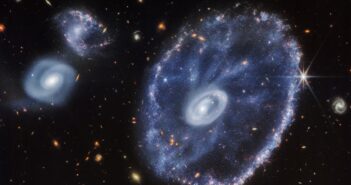
Features
Monthly Roundup: Rings, Chains, and Bubbles
From planetary systems to colliding galaxies, the universe is full of intricate structures. This month’s roundup examines where three vastly different types of structures come from.

Astrobites
A GLIMPSE of the First Galaxies?
Astrobites reports on very deep JWST observations and the hunt for the first galaxies in the universe.






